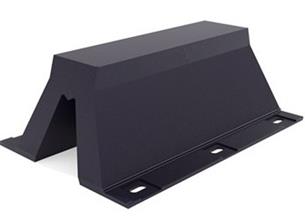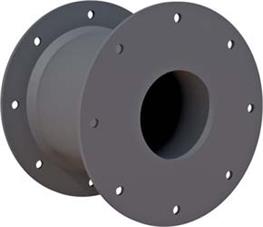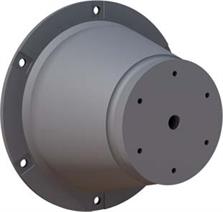Berthing Energies in Ferry and Ro-Ro Berths |
| Author : Date : 2016-10-19 1:34:18 |
Berthing Energies in Ferry and Ro-Ro Berths
The three modes of berthing for ferries and Ro-Ro ships in common use are as follows: a) making a transverse approach to berth alongside a quay and using the ship’s own ramps for vehicle access; b) making a transverse approach to a row of breasting dolphins and after coming to rest then moving slowly longitudinally to berth end-on against a shore ramp structure; c) making a direct longitudinal approach to berth end-on against a shore ramp structure but using side breasting dolphins as a guide. These three modes of berthing are illustrated in Figure 3a, Figure 3b and Figure 3c. The berth layouts for modes b and c are similar and therefore both types of approach could occur at the same berth. Mode a is most likely to be adopted by the larger Ro-Ro vessels where bow and stern are not specifically designed for berthing forces. Mode c is most likely to be adopted by ferries where bow or stern are designed for end berthing. It is important that the berthing provision is conformable with the ship’s characteristics and the appropriate method of approach. 1. Mode a The fendering should be designed to absorb energies calculated in accordance with
2. Mode b — Side fenders: Berthing energy for the side fenders should be calculated as in mode a. — End fenders: The end fenders should be designed to absorb the total energy E (in kN m) of the ship. This energy is calculated from the following equation: E=0.5 MV2 where Note 1: In the absence of factual data, V may be taken as 0.15 m/s.
3. Mode c — Side fenders: The energy E (in kN m) to be absorbed by the side fenders should be calculated from the equation: E=0.5MD CM CS CC CE (V sin a)2 where A minimum value of 15°is recommended for a except in cases where the berth grometry restricts the vessel to a less angled approach. Due to the high power of most ferries and rapid turn-round times, operating speeds are generally higher than for other vessels. It is therefore recommended that the velocity V should be taken as follows (see Figure 3c) outer end dolphin 2.0 m/s to 3.0 m/s; — End fenders: The end fenders should be designed to absorb the total energy E (in kN m) of the ship. This energy is calculated from the following equation: E=0.5M(V cos a)2 Note 1: In the case of ferries V should be taken in the range 0.5 m/s to 1.0 m/s;
|

 info@dolphinmarines.com
info@dolphinmarines.com





